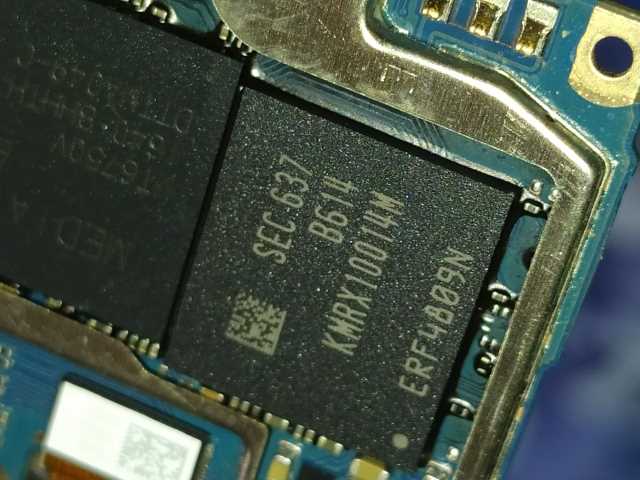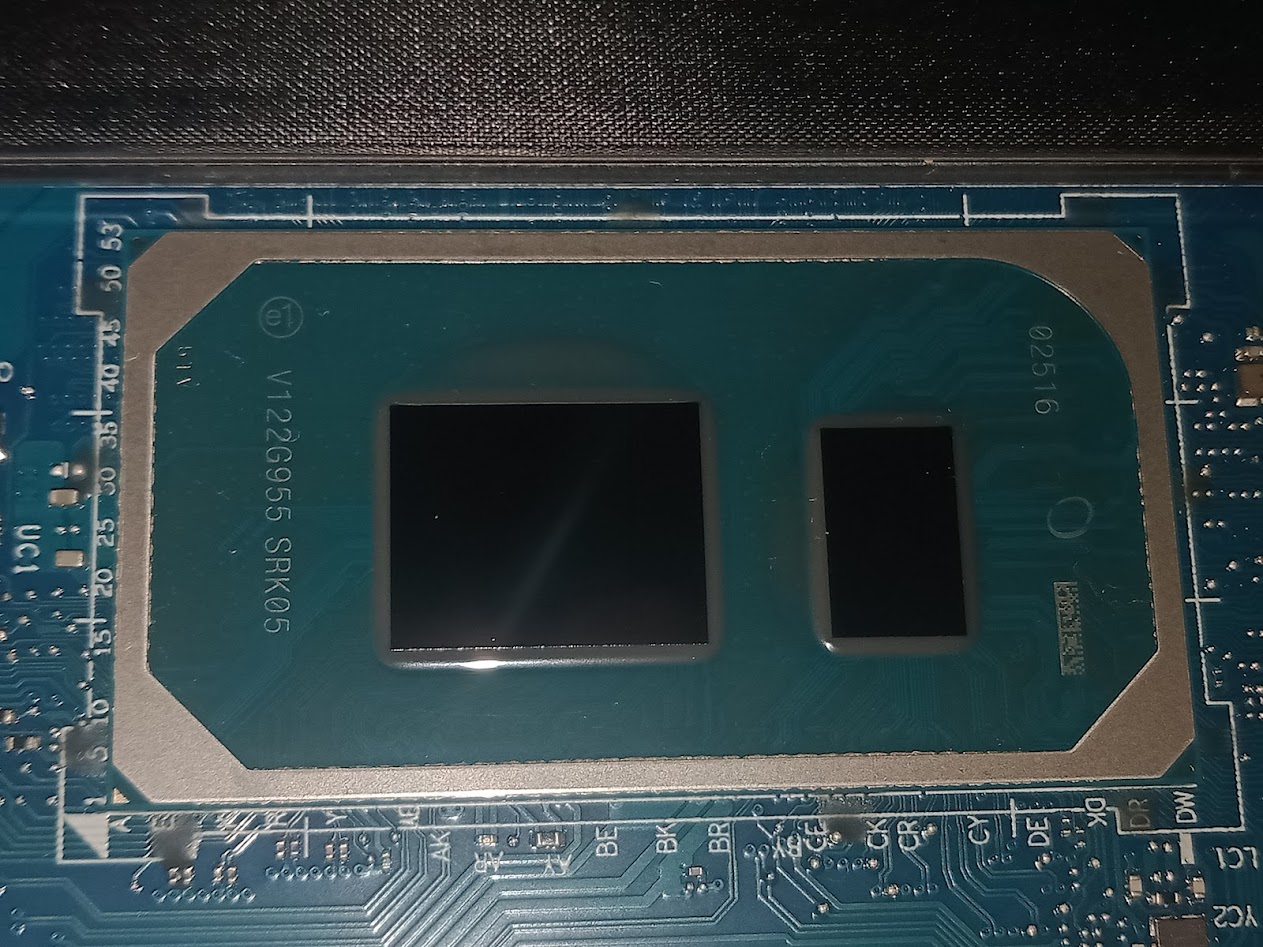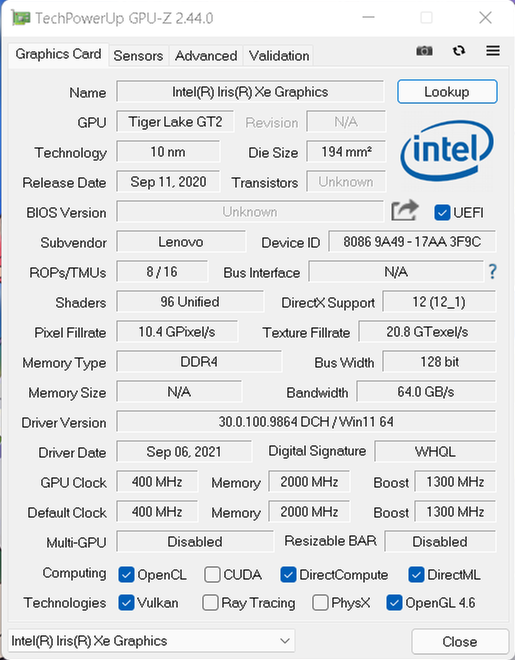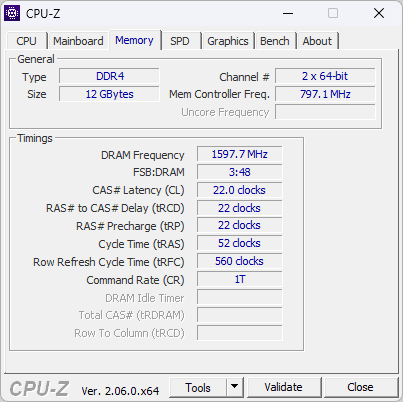Comparing: Samsung KMRX10014M vs Intel Iris Xe Graphics (80EUs, Tiger Lake) [Disk]
In this comparison, we analyze two Disks: Samsung KMRX10014M and Intel Iris Xe Graphics (80EUs, Tiger Lake) [Disk], using synthetic benchmark tests to evaluate their overall performance. This side-by-side comparison helps users understand which hardware delivers better value, speed, and efficiency based on standardized testing. Whether you're building a new system or upgrading an existing one, this benchmark-driven evaluation offers valuable insights to guide your decision.

Samsung KMRX10014M
| Type: | Disks |
|---|---|
| Model: | Samsung KMRX10014M |
| Capacity: | 32GB |
| Interface: | eMMC |

Intel Iris Xe Graphics (80EUs, Tiger Lake) [Disk]
| Type: | Disks |
|---|---|
| Model: | Intel Iris Xe Graphics (80EUs, Tiger Lake) [Disk] |
| Capacity: | 2GB |
| Interface: | DDR4 |
Specification Comparison Table
This specification comparison presents technical details of several devices or components to help you understand the key differences between each option. Use this table as a reference to determine which device best suits your needs.
| Specification | Samsung KMRX10014M | Intel Iris Xe Graphics (80EUs, Tiger Lake) [Disk] |
|---|---|---|
| Brand | Samsung | - |
| Format | eMMC 5.1 | VRAM Disk |
| Capacity | 32GB | 2GB |
| Interface | eMMC | DDR4 |
Submission Comparison Table
This submission comparison table displays the number and details of benchmark data submissions from various devices or components. This information helps you understand the performance based on the benchmarks that have been tested, as well as providing an overview of the consistency and popularity of the available benchmark results.
Submission Comparison Chart
This chart visualizes the benchmark scores comparison between two hardware devices based on submitted data.
Media Gallery
A collection of photos of tested hardware. These images can help you identify the physical form, model, and variant of the hardware in question. These photos are from our own documentation, and if they are not available we may not be able to document them.
About Hardware Samsung KMRX10014M
OPPO F1s eMMC 5.1 (Samsung KMRX10014M) is an internal storage chip made by Samsung that is used in the OPPO F1s smartphone. Relying on eMMC 5.1 technology, this chip offers increased data transfer speeds compared to the previous generation (eMMC 5.0), providing a smoother user experience, especially when it comes to opening apps, saving files, and running the Android operating system responsively.
Although not comparable to UFS (Universal Flash Storage) in terms of performance, eMMC 5.1 remains an economical storage solution for mid-range devices like the OPPO F1s. The technology is reliable enough to handle everyday activities such as opening social media, recording videos, taking photos, and storing documents and apps.
The test was conducted on an OPPO F1s device with MediaTek MT6750 specifications, 4GB of RAM, and 32GB of internal storage, running on the Android 6 operating system. The internal storage on the OPPO F1s uses the Samsung KMRX10014M chip, which is an early generation eMMC 5.1 with relatively high performance for the standards of its release time.
Interestingly, despite the device being over 7 years old, testing using the Cross Platform Disk Test (Mobile) showed read speeds of 286.5 MB/s and write speeds of 78.7 MB/s. These figures are impressive for an eMMC chip that has gone through a long usage cycle, and indicate that the Samsung KMRX10014M has good NAND Flash endurance.
Overall, the eMMC 5.1 on the OPPO F1s offers an ideal combination of power efficiency, moderately high performance, and low manufacturing costs. This makes it a very suitable solution for devices with standard to mid-range requirements, especially when first released. While eMMC performance may degrade with age, these benchmark results show that the chip is still capable of performing quite well even after many years.
Device test (testbed):
Device: OPPO F1s
CPU: MediaTek MT6750
RAM: 4GB
Storage: 32GB
OS: Android 6
* This test was conducted after the device was approximately 7 years old, which is likely to have degraded the performance of eMMC.
Friday, 19 November 2021 16:41:45 | Update: 1 month ago
About Hardware Intel Iris Xe Graphics (80EUs, Tiger Lake) [Disk]
Intel Iris Xe Graphics (80EUs, Tiger Lake) is the integrated graphics solution (iGPU) of the 11th generation of Intel Core processors, specifically the Tiger Lake series. With 80 Execution Units (EUs) and support for Intel's latest graphics architecture, Iris Xe is capable of delivering significantly better performance than previous generations, including in terms of lightweight graphics rendering, 4K video playback, and casual gaming. Another advantage is its excellent power efficiency as it is directly integrated in the CPU, making it ideal for thin and power-saving laptops.
In this test, Iris Xe Graphics was configured to utilize part of its shared memory as a VRAMDisk. The VRAMDisk concept allows the use of a portion of VRAM-which in iGPUs like Iris Xe comes from the main system RAM-as high-speed storage. While not as fast as physical RAM-based RAMDisks, VRAMDisks on iGPUs still offer very high read/write speeds, mainly due to the optimization of the graphics architecture and the wide memory bandwidth.
The test was conducted on a Lenovo IdeaPad Slim 3i 14ITL6, with an Intel Core i5-1135G7 processor, 12GB DDR4 3200MHz dual channel RAM, and Windows 11 22H2 operating system. Based on data from dxdiag, the dynamically available VRAM reaches 6GB, and in this test, 2GB was allocated as VRAMDisk using GPU RAM Drive software.
Benchmark results from CrystalDiskMark show read speeds of 2758.52 MB/s and write speeds of 2109.43 MB/s. These speeds are significantly higher than SATA SSDs and even close to mid-range NVMe SSDs, making VRAMDisks on iGPUs an attractive experimental solution for temporary data caching, storage performance testing or other specialized scenarios. With a 128-bit bus width and support for 3200MHz DDR4 memory, Iris Xe VRAMDisk shows that even integrated graphics can be creatively utilized for high-speed storage tasks.
Device test (testbed):
Device: Lenovo IdeaPad Slim 3i 14ITL6
CPU: i5 1135G7
RAM: 12GB DDR4 3200MHz Dual Channel (8+4)
OS: Windows 11 22H2
Friday, 06 August 2021 04:34:19 | Update: 1 month ago



